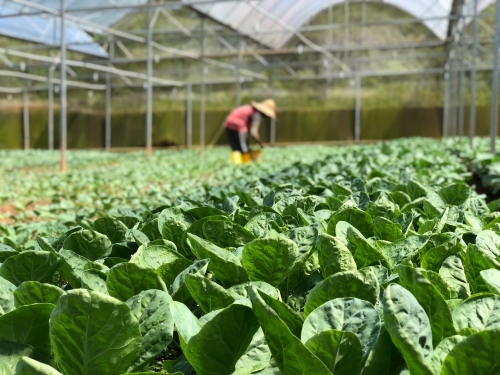Horticulture

India, with its diverse agro-climatic zones, has been a cradle for horticulture, contributing significantly to the nation's agricultural wealth. Horticulture, encompassing the cultivation of fruits, vegetables, flowers, and ornamental plants, plays a vital role in the country's economy and provides livelihoods to a substantial portion of the population.
Diversity in Climate and Crops
India's varied climate, ranging from tropical to temperate, allows for the cultivation of a wide array of horticultural crops throughout the year. In the northern regions, apples and cherries thrive in the temperate climate, while the southern parts contribute to the cultivation of tropical fruits such as mangoes, bananas, and pineapples. The western and eastern states specialize in a diverse range of vegetables and floriculture.
Major Horticultural Crops
India is a major producer of fruits like mangoes, bananas, apples, grapes, and citrus fruits. The country also excels in vegetable production, including potatoes, onions, tomatoes, and green leafy vegetables. Floriculture has gained prominence, with India exporting a significant quantity of flowers and ornamental plants to international markets.
Technological Advancements
Advancements in technology have played a crucial role in the growth of horticulture in India. The adoption of modern farming techniques, greenhouse cultivation, drip irrigation, and precision farming has increased productivity and improved the quality of horticultural produce. The integration of information technology in agriculture has also facilitated better crop management and market access for farmers.
Government Support and Initiatives
The Indian government has been actively promoting horticulture through various schemes and initiatives. The National Horticulture Mission (NHM) aims to enhance horticultural productivity, strengthen post-harvest management, and create a robust market infrastructure. Subsidies on seeds, fertilizers, and irrigation equipment are provided to encourage farmers to adopt modern horticultural practices.
Challenges and Sustainable Practices
Despite the successes, the horticulture sector in India faces challenges such as inadequate infrastructure, post-harvest losses, and market access issues. To address these challenges, there is a growing emphasis on sustainable practices, organic farming, and the promotion of farmer-producer organizations. Training programs and workshops are conducted to educate farmers about eco-friendly practices and the importance of biodiversity in horticulture.
Conclusion
Horticulture in India stands at the crossroads of tradition and innovation, with a rich tapestry of crops cultivated across the length and breadth of the country. As technology continues to play a pivotal role and the government extends support, the future of horticulture in India looks promising. With sustainable practices and a focus on improving infrastructure, India is poised to maintain its position as a global leader in horticultural production.